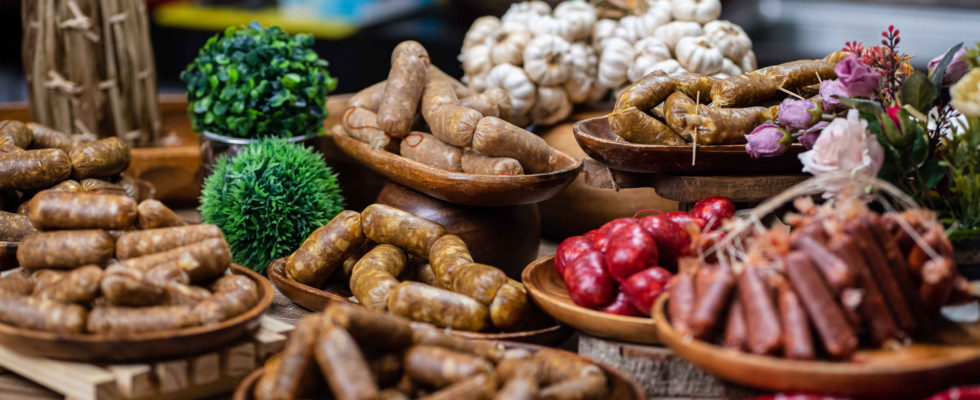For Pinoys, one of the great breakfast options we can have (aside from eggs) is longganisa, a type of Filipino sausage. But did you know that when you use the term “longganisa,” a Pinoy can think of so many different varieties? Whether you’re drawn to the sweet, the savory, or the spicy, there’s a longganisa out there that’s perfect for your palate.
And that’s what this article is going to talk about: some of the various Filipino longganisa types. Whether you’re a food enthusiast or a home cook looking to expand your culinary repertoire, understanding the vast array of longganisa varieties across the Philippines is a journey worth taking.
Get ready to enjoy the many delicious flavors of this popular Filipino breakfast staple!
Longganisa Pinoy Variety 1: Chorizo de Cebu
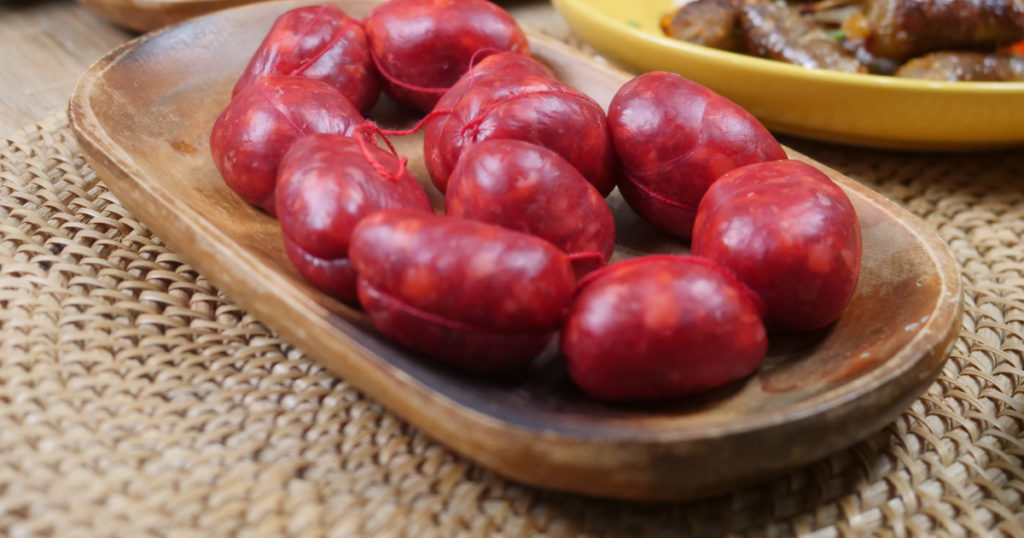
Chorizo de Cebu, also known as longganisa de Cebu, is a beloved pork sausage from the Cebu region. You’ll know it by its sweet, spicy, and garlicky flavor profile. This longganisa hamonado-type stands out with its vibrant red color from achuete seeds and distinctive spherical shape.
Made from a mix of lean pork, pork fat, salt, pepper, sugar, anise liqueur, paprika, garlic, and chilis, it’s encased in hog casings but can also be prepared without them. You typically enjoy this Filipino fried or grilled alongside white or garlic rice, or with puso—a traditional rice wrapped in palm leaves. It’s a versatile and flavorful addition to any Filipino breakfast table.
Longganisa Pinoy Variety 2: Longganisa ng Lucban
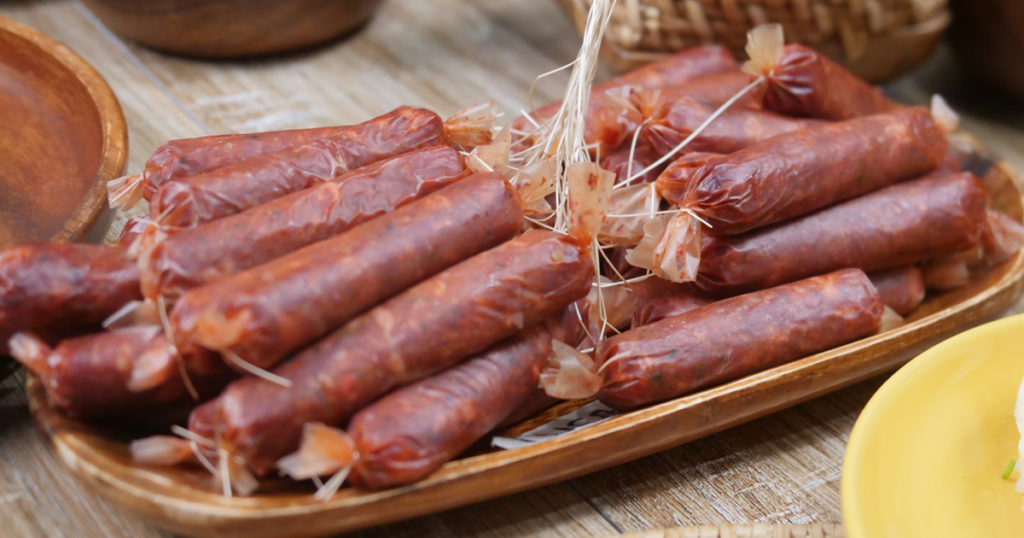
Longganisa ng Lucban is a distinctive Filipino sausage from the town of Lucban in Quezon province, celebrated for its unique garlicky and sour profile. Unlike the more common sweet varieties of longganisa, makers infuse this Filipino longganisa dish with a blend of Mediterranean spices like oregano and smoked paprika, alongside a generous amount of garlic and vinegar.
Aside from the ingredients mentioned above, you usually make this with lean pork, pork fat, coarse salt, sugar, and vinegar, and wrap it in a thick casing, although it can also be enjoyed without the casing. Traditionally served with fried rice and atchara (a Filipino pickled dish), it pairs exceptionally well with Pancit Habhab, another noodle dish that originated from the Quezon province. This sausage’s preparation involves curing the meat mixture in casings, highlighting its robust flavor that’s best savored as a hearty breakfast or a savory snack.
Longganisa Pinoy Variety 3: Vigan Longganisa
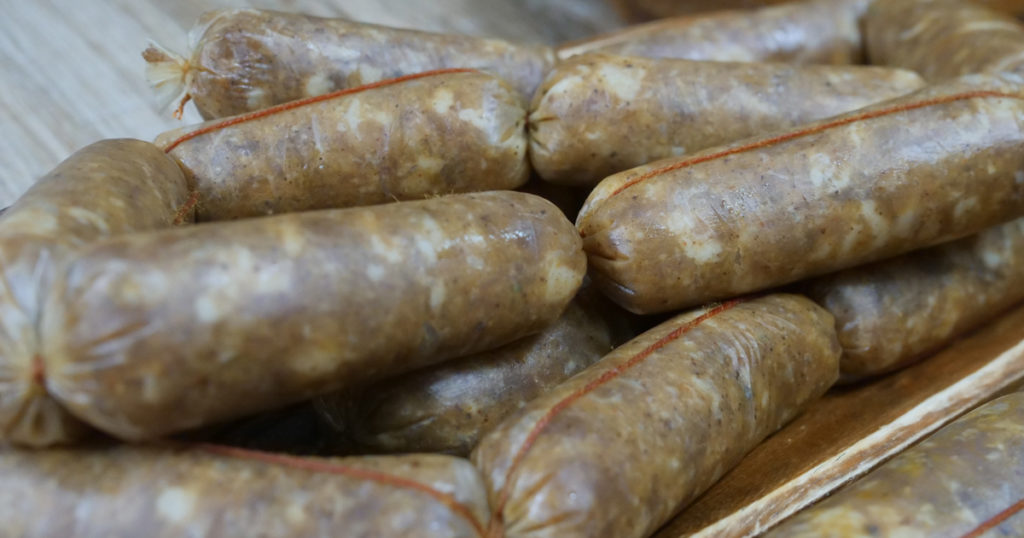
Vigan Longganisa originates from the Ilocos region. When you make them, you hang the sausages under direct sunlight for 4-6 hours to drip dry the fat and excess liquid, then pan-fry them until brown. This method, akin to the traditional smoking over an earthen stove, imbues the Vigan longganisa with a distinct smoky flavor, enhancing its sourness.
Eat it with Ilocos vinegar for an added zing. Have it for breakfast with some garlic rice, tomatoes, and a fried egg for a savory and tangy start to the day!
Longganisa Pinoy Variety 4: Alaminos Longganisa
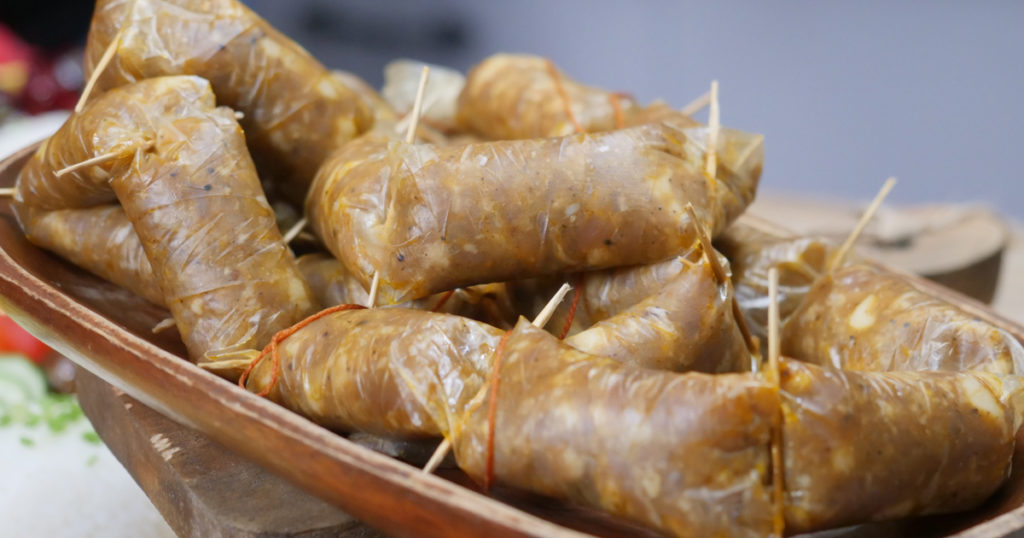
Alaminos Longganisa hails from Pangasinan. It is the perfect little treat for anyone who wants mild flavors and cute, bite-sized portions of food. Aside from it being slightly sweet and having the right touch of garlic, it also has a distinct look.
Instead of the usual twist or string tying these sausages together, makers connect them with little sticks called “buli,” making each string of Alaminos Longganisa look absolutely unique. It’s the kind of detail that adds a dash of fun to your cooking and might even get the kids interested in what’s on their plate.
Oh and a fun fact? Alaminos Longganisa is a star in its own right, celebrated every year at the Longganisa Festival. So, when you bring these Filipino sausages into your kitchen, you’re not just cooking up a meal; you’re whipping up a piece of cultural pride!
Longganisa Pinoy Variety 5: Imus Garlic Longganisa
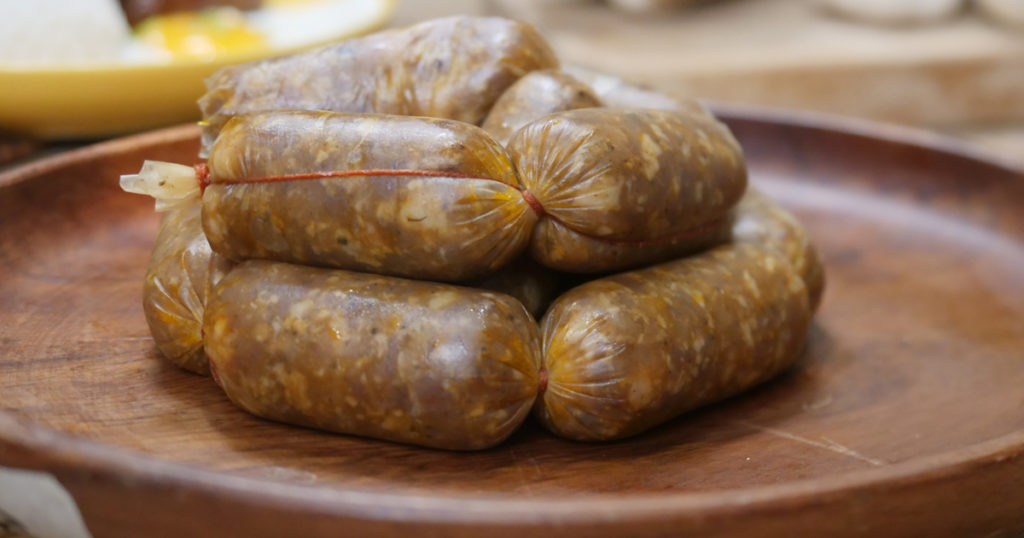
Imus Garlic Longganisa, from Cavite, is one of those Filipino recipes that is a dream come true for garlic enthusiasts. It’s packed with a punch of garlic flavor and has a very bold taste. It’s a recado longganisa, after all. It’s a straightforward recipe that delivers: just combine ground pork, plenty of garlic, soy sauce, vinegar, black pepper, and a touch of achuete seeds for color, and you’re good to go!
You can choose to encase it in hog casing or go for a skinless longganisa variant, depending on your preference.
Longganisa Pinoy Variety 6: Pampanga Hamonado Longganisa
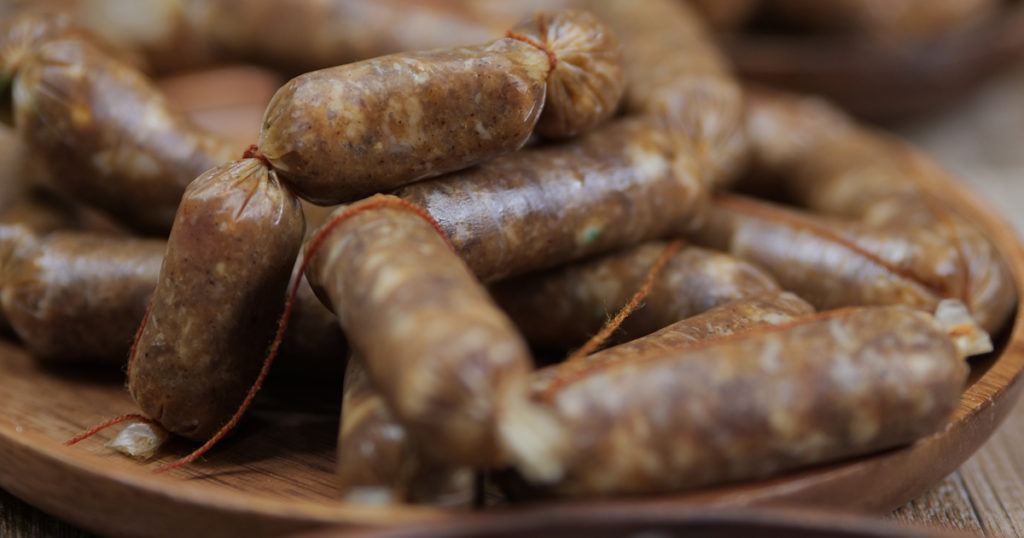
Pampanga Hamonado Longganisa brings a sweet and juicy option to the table. This delightful sausage is known for its rich, hamlike taste that comes from being marinated in pineapple juice. It also has a distinct appearance; while makers often color it orange or red with achuete seeds or annatto powder, the usual longganisa look, this longganisa variant is typically longer and thinner.
Unlike other Philippine sausages that may lean towards the garlicky or spicy, Hamonado is a Filipino sweet sausage, making it a hit for those who prefer this flavor for breakfast. The mixture of ground pork, garlic, brown sugar, black pepper, coarse salt, and a hint of vinegar creates a flavor profile that’s both comforting and satisfying.
Longganisa Pinoy Variety 7: Calumpit Longganisa
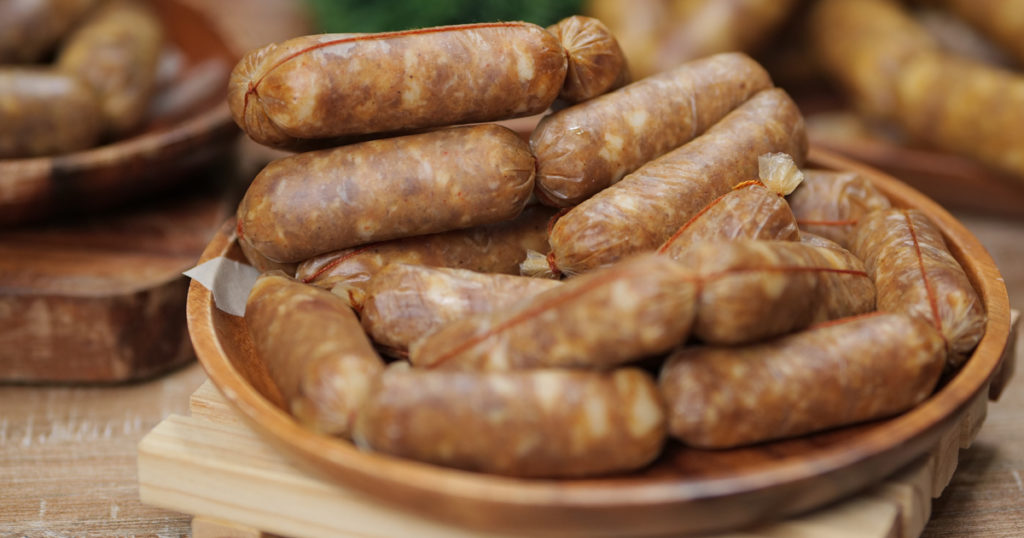
Calumpit Longganisa, hailing from Bulacan, Philippines, is known locally as longganisang bawang. This other recado variety in this list is crafted from a mix of lean ground pork, pork fat, and a generous helping of garlic, along with bay leaves, brown sugar, soy sauce, vinegar, salt, and black pepper. Typically, you boil this Filipino longanisa before frying it to achieve the perfect level of doneness, allowing its flavors to fully develop.
Calumpit Longganisa comes in original garlic, spicy garlic, and sweet and spicy varieties. The flavors cater to different tastes – whether you want something traditional or spicy to start your day. With its garlicky profile and touch of sweetness or heat, Calumpit Longganisa offers delicious options to actively customize your experience.
Want to learn a Pinoy longganisa recipe?
Want to start making your own longganisa after reading all about it? Looking to try the diverse longganisa varieties?
Well, you don’t have to go far. Just enroll in Chef Chona Garcia-Laureta’s latest class here at The Bailiwick Academy: Philippines’ Regional Longganisa!
It’s an easy-to-follow class, perfect even if you’re a beginner at making these. And at the end, not only will you be able to make a delicious longganisa Filipino breakfast, you might find yourself posting Filipino longganisa for sale in your social media accounts.
After all, who wouldn’t be attracted to not having to travel to taste their favorite longganisa variants, right? It makes for a pretty good food business!
So what are you waiting for? Sign up at The Bailiwick Academy and start your journey to being one of—if not the best longganisa supplier—in the Philippines and all over the world, today!
—
Keep coming back to The Bailiwick Academy blog for more baking and cooking tips, kitchen tricks, and much more!

